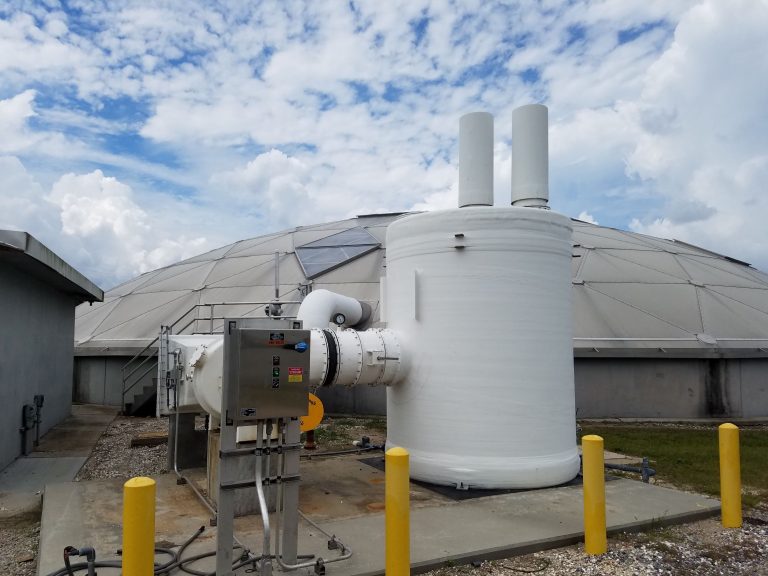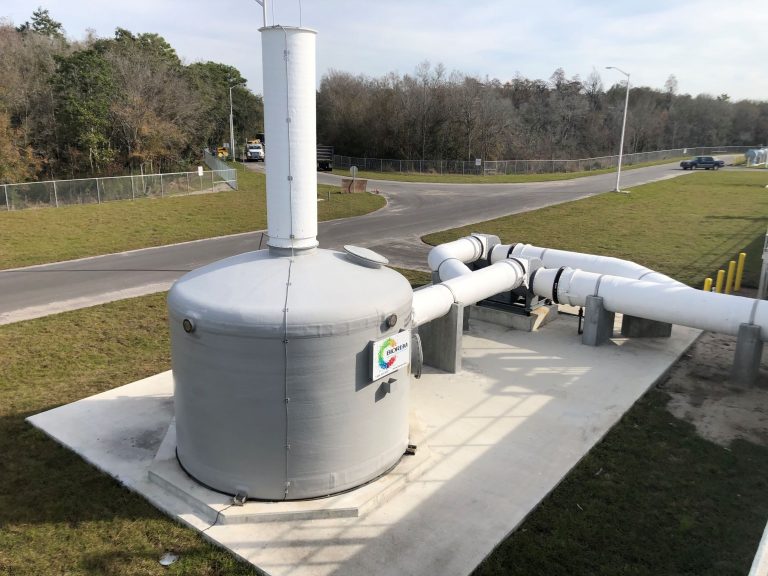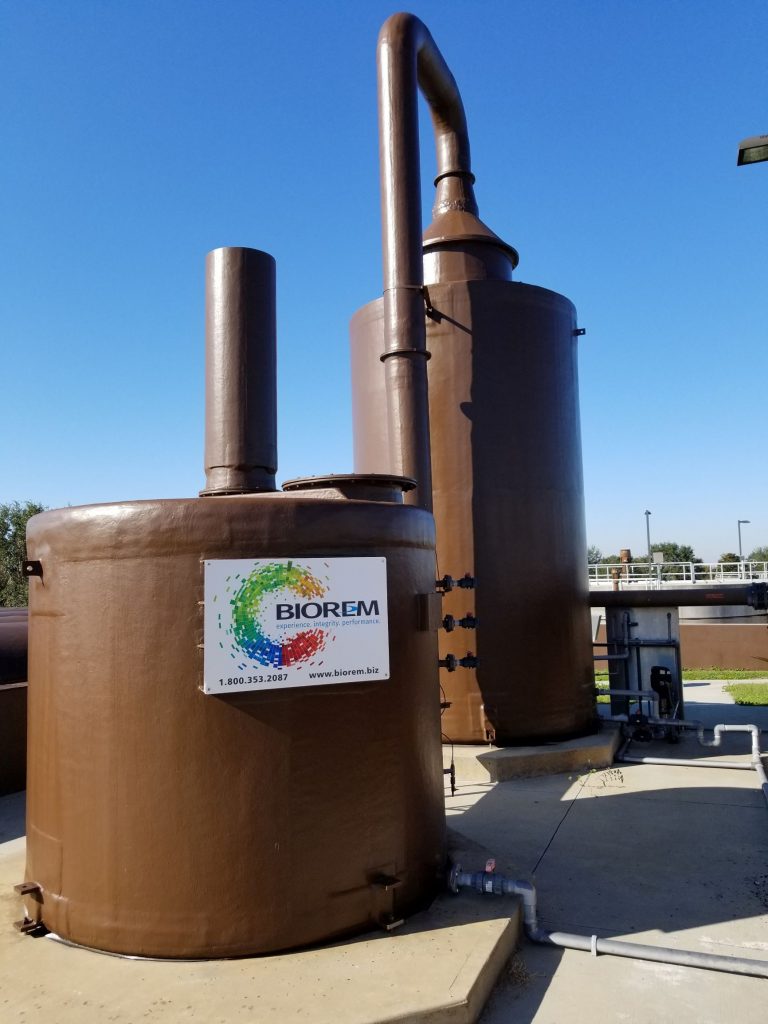Dry Scrubbers
How Dry Scrubbers Work


BIOREM provides dry scrubbers as stand-alone units or as a polishing stage following other pre-treatment technologies. Due to the relatively small bed volumes, media change-outs are quick and require little labor. BIOREM develops custom blends of adsorbents to match the requirements of the specific application and types of compounds being targeted.
Virgin activated carbon is the most popular dry scrubber media type. Sourced from coconut shells char or bitumous coal, it is steam activated to produce exceptionally high surface area. The high surface area results in the adsorption of high boiling point volatile organic compounds onto the surface of the media. Adsorption can be described as enhanced liquefaction due to London dispersion forces. BIOREM engineers are able to predict the adsorption capacity of activated carbon for any volatile organic compound using the Polanyi/Dubinin Potential Theory of Physical Adsorption, including multi-compound interactions and the effect of relative humidity.
Catalytic activated carbon is an another type of virgin activated carbon which has been surface modified to promote the catalytic oxidation of compounds prior to adsorption. It is most often used for the capture of hydrogen sulfide, which has low capacity on a traditional virgin activated carbon. The surface of a catalytic activated carbon converts hydrogen sulfide and other organic sulfur compounds to elemental sulfur which has a high adsorption capacity. Catalytic carbon effectively treats hydrogen sulfide without the thermal risks that are associated with caustic impregnated carbon.
Potassium permanganate impregnated aluminum oxide is used for the compounds that have a low boiling point and resulting low adsorption capacity. Similar to the mechanism in the catalytic activated carbon, the potassium permanganate oxidizes compounds to a solid which is strongly adsorbed. This media is well suited for polar and low molecular weight organic compounds as well as for organic sulfur compounds. Potassium permanganate is typically used as a second stage media after virgin activated carbon or catalytic activated carbon.
BIOREM dry scrubbers are available in a number of different configurations to meet site specific requirements:
| Standard Scope | Features | |
|---|---|---|
| Vertical Single/Dual Bed |
|
|
| Radial Bed |
|
|
| Deep Bed |
|
|
Large variety of ancillary components that can be included as required:
- Rotating desiccant bed dehumidifier
- Heat transfer (heating/cooling)
- Mesh pad grease/mist eliminator
- Isolation damper
- Expansion joints
- Blower sound enclosure
- Blower discharge silencer
- Vessel & equipment materials of construction
- Vessel Insulation
- Differential pressure
- Temperature
- Hydrogen sulfide measurement
- Carbon monoxide measurement
- Startup and operator training
- System performance testing
- Air sampling and analysis
- Carbon media sampling and analysis
Low Cost Solutions
- Organics Processing
- Clean Room Air Supply
- Agribusiness
- Food & Beverage
- Pharmaceutical
- Surface Coatings
- Petrochemical
- Solid Waste Handling
- Semiconductor
- Chemical production facilities
- Collection systems
- Pumping stations
- Headworks
- Liquid Phase Treatment
- DAF Systems
- Equalization Basins
- Biosolids Processing (thickening, dewatering)
- Biosolids Storage Tanks

